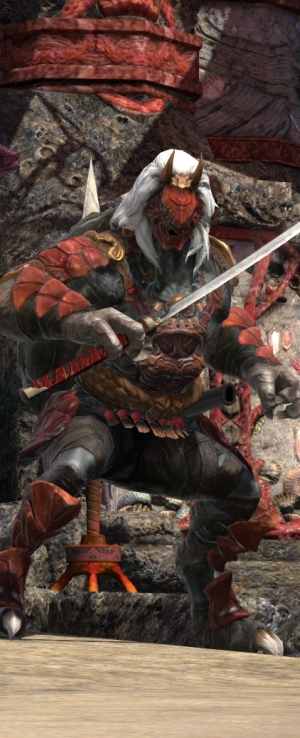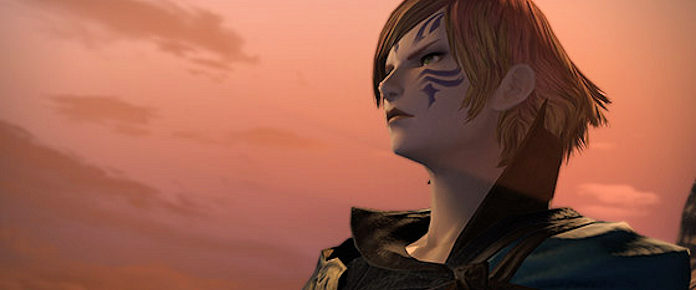
Has the pace of news moved so quickly that we’ve already forgotten about Brendan “PlayerUnknown” Greene’s statement that video games lack any IP copyright protection? Because that was really ridiculous. Especially since what he was referring to was not actually even remotely related to copyright, but covered something that would be handled via patent. And even that wouldn’t have worked!
Of course, you can’t really blame him. By which I mean you can totally blame him, but it’s a common misconception that turns up time and again. People talk about copyright, trademark, and patent issues in the same general melange of “this company owns this,” and the thing is that they’re related terms and concepts that nevertheless mean very, very different things.
If it needs to be pointed out, I am not a lawyer and definitely not an attorney working in this particular field, which is complex, multifaceted, and the sort of law that employs lots of people to untangle things. All the same, I can give you a quick primer on what the three different things are, why they differ, and how to at least use the terminology in a way that makes you look as if you kind of know what you’re talking about.
Trademark
 At face value, trademark is the easiest thing to understand because it’s simply any mark you use as part of your trade. That’s pretty obvious, right? That covers a wide spread of different ideas – from basic “TM” trademark claims to formal, legally recognized trademarks registered with the government – but at its core, it means that you can’t start selling something using a name and branding that someone else already claims or registered.
At face value, trademark is the easiest thing to understand because it’s simply any mark you use as part of your trade. That’s pretty obvious, right? That covers a wide spread of different ideas – from basic “TM” trademark claims to formal, legally recognized trademarks registered with the government – but at its core, it means that you can’t start selling something using a name and branding that someone else already claims or registered.
By way of example, if I make a comic book about a pair of depressed 40-something divorced people learning to love a group of animals and title it The Wolverine, I would be hearing about that from Disney’s lawyers. Not because the content in any way infringes upon that company’s rights, but because I’m selling it using a name that they have pretty clearly registered and established as a trademark.
Of course, the core of trademarks is that they don’t apply if they’re not being used, if they’ve effectively been abandoned. Thus, in order to defend a trademark, you have to prove prominent and continual use while also rather zealously defending it in a variety of arenas. This is why a lot of issues about trademark violation can sometimes seem tiny or unnecessary, like Blizzard cracking down on that World of Starcraft fan project a few years back. It wasn’t out of pettiness or small-mindedness; failing to defend the trademark there would make any future attempts to defend Blizzard’s trademarks weaker. So companies tend to be proactive about defending prominent trademarks, and it’s also why you see certain slogans and terms put forth a lot.
The other important part of trademarks is that you want to make the trademarks as specific as possible to keep things defensible. A game simply titled “Ascent” would have a very weak trademark, since that’s just a normal English word and not terribly distinctive. Ascent: Infinite Realm is distinctive, however, and thus makes it easier to defend the trademark if it comes up in court. Made-up words are also usually gold, which makes H1Z1 a particularly easy trademark to defend (that’s not likely to come up in casual conversation, after all).
Copyright
Most often, MMOs deal with copyright issues, which is a bit fuzzier. By design, that is. Where trademark refers to what you use to identify the product, copyright refers to what’s actually in it, and it’s intentionally based more upon perception and similarity than it is strict usage. It’s the set of laws that govern intellectual properties because the entire notion of intellectual property comes about as part of copyright.
Consider Guild Wars 2. The world of Tyria, the Six, the Elder Dragons, Elona, the Sylvari, the Charr, and so forth are not necessarily trademarked. But it’s clear that all of those story elements are designed to be distinct and identifiable portions of the original work in question. Another title that transparently filed the serial numbers off these concepts to produce the exact same world would be violating ArenaNet’s copyright.
Or, to extend the above analogy, if I released a comic book about a short Canadian man with three retracting claws, a healing factor, and anger management issues, it wouldn’t matter if I titled it “Captain Short-and-Mad.” I might not be infringing upon Marvel trademarks with that, but I’m pretty clearly infringing upon copyright in the process.

Copyright is rather intentionally vague and reliant on judgement calls. Despite what a lot of people like to claim, there is no “change X number of things” or “change X% of the work” that will avoid copyright infringement. Neither does fair use work as a be-all catch-all to avoid copyright infringement. You can claim that the copyright infringements in question are covered under fair use, but you still have to prove that you are acting according to the principles of fair use (which doesn’t cover nearly as much as you might think it does).
The flip side to that, though, is that copyright also doesn’t work like trademark insofar as it isn’t reliant on prosecution. Fanfic and fan art are the classic examples, and lots of MMO companies encourage fan artists to make and even sell works based on their games. Blizzard can support and encourage Overwatch fan artists without weakening their claim to the Overwatch IP, and they can happily prosecute one artist for IP infringement while leaving another artist alone.
Or, as has actually happened, Blizzard can prosecute someone for copyright infringement based on the actual code of the game while still encouraging cosplayers and fan artists and the like.
Connected to this is the time-honored concept of the cease-and-desist letter. Contrary to what you might be thinking, a cease-and-desist letter carries absolutely no legal weight whatsoever, and you can send one at any time for any reason. It’s essentially a warning shot to promise future legal action, and it’s entirely possible to respond to a C&D letter by ignoring it altogether and facing no further consequences whatsoever. That doesn’t mean that’s the smart reaction, of course; big companies are usually wise enough to send one only if they want something taken down and have the legal weight to make it happen.
IP laws are meant, first and foremost, to make sure that creators (or the companies that own a creator’s work) are the only ones able to profit off of the IP in question in the fields that they care about. In the case of a game like PlayerUnknown’s Battlegrounds, the funny thing is that the IP basically extends only to the eponymous branding; lacking characters or a narrative, that’s all you have.
Patents
Last but not least for this particular discussion, patents cover the way that you do things. You can trademark the name Super Mario Bros. and you can copyright the idea of the Mushroom Kingdom, but if you want to make sure that no one else can make a game in which you jump on platforms and critters, you need to patent the actual mechanics.
Patents are a fair bit more complicated than trademarks or copyrights, and perhaps accordingly they require filing paperwork. Just writing something gives you copyright on it, marketing allows you to use and register a trademark, but patenting it means that no one else can write things as a means of expression. Or at least, it would mean that if writing things were not already long extant and considered normal and expected.

See, patents require you to prove that you came up with a new way of doing something that no one else had before and that is not self-evident. For this particular discussion, it mostly just covers game mechanics. Patents are also time-limited by design; you get exclusive rights for a while and can force other companies to pay you in order to replicate your work or just deny them outright, but when the patent expires, anyone can use the technology.
In the case of game systems, patents are the big reason loading screens don’t have minigames (someone squatted on the patent as soon as loading screens became ubiquitous, thus meaning that our loading screens were gameless) and generally wind up covering hopeless minutiae without really helping the industry. If you want to make sure that no one else can make a battle royale game, for instance, you could apply for a patent for it… but you would have to prove that you came up with it without prior games having similar options.
Since that would be impossible, you would probably wind up coming down on the little things that you could patent, like having a particular means of entering the arena or the like. It’s also possible to have a very novel and innovative game in which you can’t really patent anything distinct, and that’s closer to the default.
To sum up
Trademark covers the name on the product. It’s defended on a “use it or lose it” basis, whether it’s formally registered or just claimed; the more distinct it is, the easier it is to defend it in any sort of legal sense. It does not cover concepts or processes, just the names used for marketing.
Copyright covers the story, characters, and setting within a product. It does not need to be defended in order to maintain the strength of the claim. It covers the ideas within the product, not the systems or the marketing name.
Patent covers the operation or interaction of the product. It is time-limited and gives you the right to request fees from anyone who wishes to use similar technology or to simply deny its use. Patents require proving that something is distinct and new rather than a remix of old ideas.















